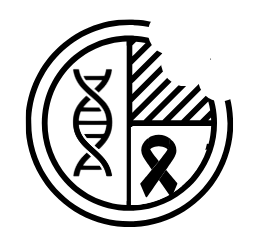Reading time: 4 minutes
Daniel Zhong
Before we believe headlines proclaiming “Cancer is cured”, it is crucial to understand that developing a therapy that universally cures all cancers is highly unrealistic as our knowledge surrounding mechanisms of cancer progression advances. While we do have non-curative treatments for some types of cancer such as chemotherapy and radiation therapy, they can have a wide array of negative consequences. Damage to surrounding tissues, damaging red blood cells, and furthering wound complications are some prominent examples of clinically seen side-effects to modern cancer treatment. Additionally, these treatments are unlikely to kill every cancer cell in a specific area. Thus, these resistant cancer cells will persist and duplicate, forming another, more aggressive tumor. Developing targeted therapeutics are beneficial, but are unlikely to be universally applicable due to several key biological differences of cancerous cell growth.
All cancer cells, whether in the same tumor or not, can be different from one another. Thus, the term “heterogeneous” is commonly used to refer to these cancer cells. Mounting evidence from the scientific community substantiates this fact as cells collected from different parts of the same kidney tumor were slightly different, which impedes our ability to develop a single targeted therapy to eliminate all of cancer. This heterogeneity can be due to the fact of the rapid growth and uncontrolled division of cancer cells. Cancer cells divide at extreme rates and accrue significant stress and mutations to their DNA. These genetic alterations only accumulate and, therefore, promote the development of more mutations as these cancer cells divide over and over again skipping over essential cell cycle checkpoints. Thus, cancer cells a given individual may have today may differ from the ones that appear several months later. Even though we do have the proper analytical and modern sequencing methodolgies to track and predict these changes before they happen, it is much more difficult to hit a moving target than a stationary one. Even the use of a combination of effective cancer treatments can result in cancer cells resistant to cure if they have survived the initial treatment. For instance, a drug that inhibits the expression of the gene BCL2L1 in gastric cancer cells, allowing them to undergo apoptosis or cellular death, may not work for other types of cancer. Even if we attempt to stop cancer cells from occurring in the first place, it is simply implausible as these cancerous cells are caused and influenced by many factors such as our lifestyle-related factors of alcohol and UV radiation from the sunlight and biological factors such as gender and skin type.
These cancer cells are hard to target even for our own immune system. They evade and hide from our own bodies since these cancer cells originate from our existing tissue. Therefore, our body has a very difficult time differentiating these cancer cells from normally dividing cells. In some cases, our T cells, or immune cells that are responsible for finding and destroying pathogens, are able to infiltrate tumors, but they suddenly stop their attack due combinatorial cell signaling and suppression of the immune response due to T regulatory cells. There has even been additional research that has shown that there may even be a special chemical in cancer cell DNA that inactivates the expression of certain genes, which allow them to avoid being detected by our immune system. Hence, due to its unique attributes, there have been several approaches to attacking cancer including the use of nanoparticles, cancer immunotherapy (using our body’s immune system to obliterate cancer cells), targeting the abundance of killer T cells by cancer vaccines, and more!
Despite the multitude of factors affecting cancer such as the “lifestyle and attitude of patients, the different physiology of people and the rate their bodies will metabolize drugs, the blood supply to the tumor affecting the drug getting into the tumor, the tumor physiology and the fact that the tumor can continue to change,” emerging cancer therapies are becoming more effective and our knowledge and ability to manipulate cancer cells will only continue to excel and flourish as time passes. Between 2007-2013, all cancer survival rates have increased from 50.4% to 67%. And despite cancer being the “second largest cause of death,” our progress against it is inevitable and will only continue to increase over the coming years (Roser and Ritchie). While there will likely be no universal cancer cure, scientists have systematically attacked nearly every type of cancer, and treatments for each will likely be increasingly effective as time goes on.
Edited by Emily Bonacquisti
Websites Cited
“A Cure for Cancer: What’s Taking So Long?” Roswell Park Comprehensive Cancer Center.
“How Does Chemotherapy Affect the Blood?” Pancreatic Cancer UK.
“Kent Hunter Explains Why Cancer Is so Hard to Cure.” EarthSky.
Martin, Laura J. “Cancer Radiation Therapy: How It Works and The Types.” WebMD, WebMD, 21 July 2018.
Roser, Max, and Hannah Ritchie. “Cancer.” Our World in Data, 3 July 2015, ourworldindata.org/cancer#cancer-death-rates-are-falling-five-year-survival-rates-are-rising.
Wanner, Mark. “Why Is Cancer so Difficult to Cure?” The Jackson Laboratory, http://www.jax.org/news-and-insights/2015/december/why-no-cure-for-cancer.
“What Causes Cancer?” All about Cancer.
“Why Haven’t We Cured Cancer?: Worldwide Cancer Research.” UK Cancer Research Charity.
“Why Is Cancer so Hard to Treat?” GI Cancer.
Image Credits
Davis, Charles Patrick. “Cancer Causes, Types, Treatment, Symptoms & Signs.” MedicineNet, MedicineNet, 18 Sept. 2019, http://www.medicinenet.com/cancer/article.htm.

